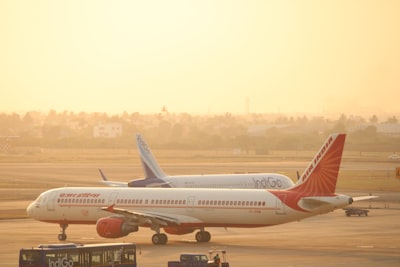Unpacking Aviation Safety Through the Air India Crash -- What Pilots' Stories Teach Us
Recent news of the Air India jet crash in July 2025 has gripped public attention, not only for the tragedy itself but also for what it reveals about aviation safety, pilot experience, and the evolving challenges of commercial air travel. With investigations pointing to the momentary switching off of engine fuel controls as a critical error, questions arise: What goes on in the cockpit? How do pilot credentials and human factors shape flight outcomes? In this article, we dive into these timely topics, exploring lessons learned from the Air India crash and why pilot expertise remains central to safer skies.
Understanding the Crash: Spotlight on Pilot Experience
When a commercial airliner like Air India's Boeing 787 suffers a catastrophic incident, investigators immediately examine the pilots' backgrounds. Captain Sumeet Sabharwal, aged 56, and First Officer Clive Kunder, aged 32, brought remarkably different career paths into the cockpit:
- Captain Sumeet Sabharwal: Over 15,000 hours total flight time; deep experience on long-haul aircraft.
- First Officer Clive Kunder: Over 3,400 hours, part of a new generation of pilots with diverse aircraft backgrounds.
These profiles underscore ongoing debates in aviation forums: Does extensive experience always guarantee safety, or does modern cockpit technology demand constant retraining and new competencies?
Modern Cockpits: Complicated or Safer?
The Air India crash raised issues central to cockpit management:
- Fuel switch confusion: The preliminary finding points to fuel switches being flipped off inadvertently. This raises concerns about cockpit ergonomics, pilot workload, and automation reliance—factors well documented in recent years by aviation safety authorities (FAA, ICAO).
- Crew resource management (CRM): High-profile airline accidents often prompt renewed discussion on CRM and communication, especially in mixed seniority pairings.
Emerging Questions: Pilot Training, Licensing, and Regulation
Public searches often spike around airline disasters for terms like pilot licensing, aviation safety regulations, and Boeing 787 crash factors. Some of the most pressing questions include:
- How current are pilot certifications?
- What kind of simulator training is mandatory for high-tech aircraft like the 787?
- How do airlines monitor and address human error?
The trend among airlines is increased investment in continuous training programs, advanced flight simulators, and mental health resources for pilots. This aligns with safety recommendations recently issued by global bodies like ICAO and IATA.
The Human Factor: Beyond the Aircraft
No matter how advanced the aircraft, the human factor remains a critical piece of aviation safety. The 2025 Air India tragedy is another stark reminder that pilots, despite robust training, operate under significant pressures—ranging from technical malfunctions to communication breakdowns.
Key Takeaways for Travelers and Industry
- Scrutiny of pilot training and experience is intensifying in the aviation industry.
- Newer cockpit technologies offer opportunities and challenges for safety.
- Human error, while reduced, can never be entirely eliminated—emphasizing the need for robust CRM and regulatory oversight.
FAQ
Q: What typically causes confusion in modern cockpits?
A: High levels of automation and complex control layouts can sometimes lead to pilots making critical errors, especially under stress.
Q: How are pilots trained for emergencies?
A: Commercial pilots undergo regular simulator training that includes emergency procedures, system failures, and communication drills.
Q: What can passengers do to ensure their own safety?
A: While passengers can't control cockpit events, flying with reputable carriers that invest in pilot training and safety management provides added assurance.
For more in-depth analysis, follow updates from international aviation regulatory agencies, airline safety reports, and trusted travel advisories. Remember: Each incident paves the way for safer skies through investigation, learning, and improvement.

Comments
No comments yet. Be the first to comment!